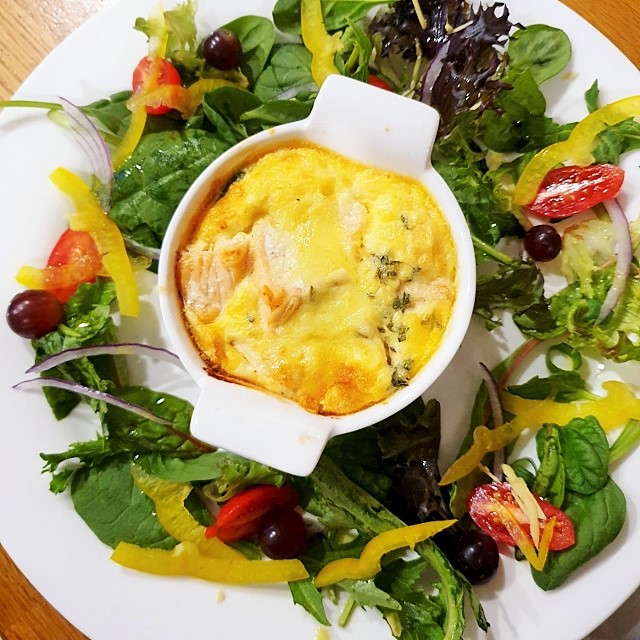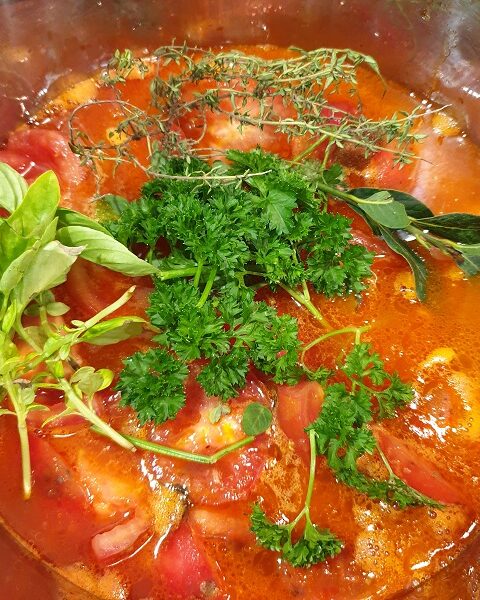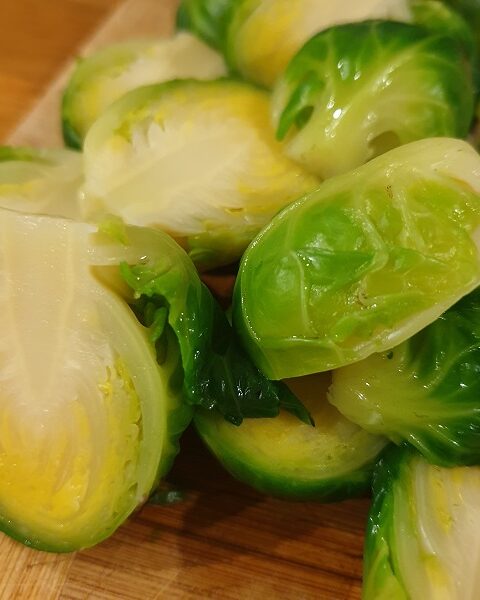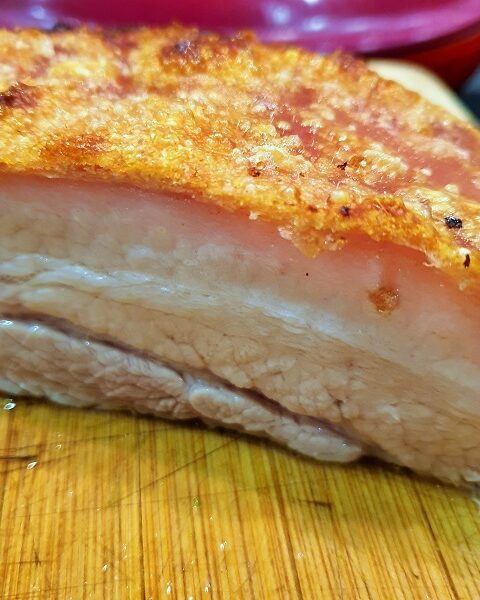
Happy New year everyone,
I wish you a great year ahead and all my best wishes to you and your family. Most importantly, I wish you a great and healthy year.
As most of us do, we let ourselves indulging all the good food around Christmas and new year. The roast Turkey, ham, gravy, potato gratin, pudding, pavlova, chocolate and the Champagne. Well whilst it is a festive time and we are having fun; we often neglect our food intake. Therefore, I have decided to kick start my little healthy journey with a nice and easy dish that will satisfy your tastebuds as well as your satiety and your carbohydrate intake. This dish has only around 520 calories per servings and all the goodies your body needs. By that I mean good source of protein, omega 3, and good fats intakes.
Let’s get cooking and be healthy without the so called “superfood”.
To access the full recipe and video, Click the link below:
History of the quiche:

The history of the quiche comes back from the Middle ages or 16th century. Even though the Quiche is a known as an open savoury tart in French cuisine, its origin took place in Germany they called it “Kuchen” the name for cakes in German. The quiche appeared in France in 1805 in the History of Nancy by Linnois comes from the language of our beloved brethren across the Rhine
Lorraine was for a long time a territory of battle between the German and the French has it is the area that border both countries. The Lorraine, as many regions of France, has its recipes of “terroir”. These are simple recipes and ingredients that were found in the times when they had little means. The terroir is the core, the land that gives us the opportunity to grow and raise animals. People used products from the farms and the local producers to live their lives. At that time, the quiche was made from dough, eggs, lean smoked ham and cream. Originally the quiche Lorraine was made without onions or cheese.
It was only later, when this recipe from Lorraine extended to the rest of France and that the dough was replaced by short pastry and sometimes Puff pastry. Nowadays, Quiche have seen some major changes in terms of fillings, such as Salmon, vegetables, mussels, seafood….
According to the “real French food” Website, the history of the quiche really took place in in 1586. The Duke of Lorraine, Charles III, was a regular consumer, if one believes the book by Philippe de Rarécourt, Maître d’Hôtel of the Duke, which was concerned about the deficit aggravated by the excessive consumption of quiches.
We owe the current form of this wondrous pie to Vincent de la Chapelle (grandfather of Don Bonapasta, PhD es-Quiche), Cook for Stanislas, Duke of Lorrain who became king of Poland on April 11, 1736. Stanislas never resided in Nancy, and led a lavish lifestyle in the castles of the Dukes of Lorraine in Luneville, Commercy or Malgrange where he stuffed himself with quiches. It is said that the philosopher Voltaire was his friend, and he intended to dazzle his contemporaries. He wanted Nancy to be one of the most beautiful cities in Europe, but when Stanislas died in 1766, Lorraine was annexed to France and Nancy lost its reputation for the best quiche has the recipe was travelling out of France.
Health Benefits of eating salmon:

Salmon is rich in long-chain omega-3 fatty acids, which have been shown to reduce inflammation, lower blood pressure and decrease risk factors for disease.
Your body requires protein to heal, protect bone health and prevent muscle loss, among other things. Salmon provides 22–25 grams of protein per 100 grams.
Salmon is an excellent source of several B vitamins, which are needed for energy production, controlling inflammation and protecting heart and brain health.
100 grams of salmon provide 11–18% of the RDI (recommended daily intake) of potassium, which helps control blood pressure and prevent excess fluid retention.
100 grams serving of salmon provides 59–67% of the RDI of selenium, a mineral involved in protecting bone health, improving thyroid function and reducing the risk of cancer.
Astaxanthin is an antioxidant found in salmon that may benefit heart, brain, nervous system and skin health.
Consuming salmon can help protect against heart disease by increasing levels of omega-3 fats, decreasing levels of omega-6 fats and lowering triglycerides.
Consuming salmon may help you control your weight by reducing appetite, boosting metabolic rate, increasing insulin sensitivity and decreasing belly fat.
Salmon and other fatty fish can help lower inflammation, which may reduce risk factors for several diseases and improve symptoms in people with inflammatory conditions.
Frequent salmon consumption may help reduce symptoms of anxiety and depression, protect fetal brain health in pregnancy and decrease the risk of age-related memory problems.
Salmon has a delicious flavour and can be prepared in many different ways. Canned salmon is a convenient and inexpensive option.








